
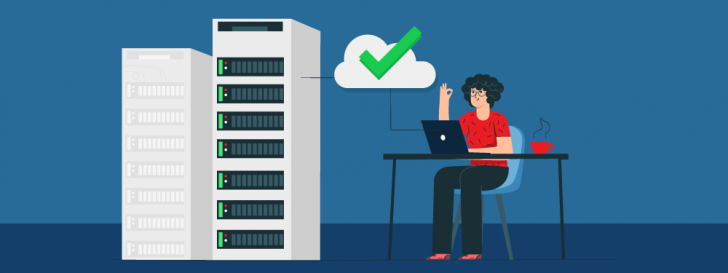
Throughout a website’s lifespan, fluctuations in audience levels are expected. These fluctuations may include sudden spikes in traffic due to various factors, such as successful social media posts, new campaigns, promotions tied to special occasions, and other potential reasons.
If your website engages in e-commerce or generates income through third-party services or advertisements, it is crucial to ensure that the hosting server can handle sudden increases in traffic. Failure to do so can result in server crashes or a slow and unreliable website performance.
Such scenarios can lead to various outcomes for your business and affect the site’s revenue generation. Additionally, a slow or inaccessible site can result in confusion for its users and visitors.
To enhance your website hosting to handle spikes in traffic and visitor surges, it’s crucial to select the right hosting service. However, upgrading hosting plans isn’t the sole solution. By implementing best practices and optimizing performance, you can delay the need for a higher plan and reduce server load effectively.
Discover how to enhance your website hosting and eliminate the need for an upgrade by reading this article.
Improve the performance of your website or application
When a page is accessed on a website, server resources are utilized, with higher consumption on sites featuring dynamic content like e-commerce platforms and content management systems such as Magento and WordPress. These platforms load pages dynamically based on specific conditions, involving database queries to retrieve product information and other details.
The amount of server resources used when loading a page can vary depending on factors related to the specific application, such as a blog, website, or online store. Therefore, optimizing the application to be as lightweight as possible is essential for hosting optimization.
To enhance in this way, it’s crucial to study the application, grasp its functionality, and enhance potential areas. This process can be quite challenging, particularly for those not in the development field. Yet, many popular apps provide guidance on how to optimize performance.
A platform that supports external themes and plugins, like WordPress, suggests using only essential plugins and a lightweight theme for optimal website performance. It’s important to understand and implement these best practices to effectively optimize your website.
Utilize external tools to assess and quantify the loading times of your website pages, such as Google Page Speed Insights, GTmetrics, and other similar options.

chsyys/ShutterStock

This analysis identifies key areas for improvement that can enhance performance by speeding up the site and reducing server load, crucial for optimizing site hosting and handling increased traffic.
Prepare for an uptick in traffic and be ready for it.
Estimating the amount of traffic your website might get is essential for ensuring your server is ready for high-demand periods, as it is closely connected to the server’s functionality.
Many accommodations set a maximum monthly visitor count. However, even for those without such a limit, the main worry should be the periods of high traffic, when the site experiences significantly more visitors than usual.

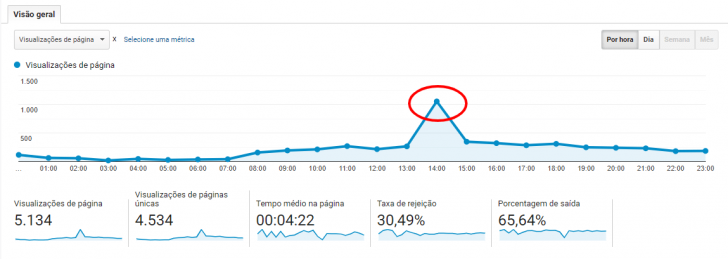
It is beneficial to anticipate a gradual rise in website traffic, especially for sites that frequently publish new content, even if they have not experienced a sudden surge in visitors before.
When reviewing the historical audience data of your website, you can use it to project a steady growth over time or spikes during specific campaigns and promotions. Ensure that your hosting is equipped to accommodate such growth based on the available information.
If you anticipate that the existing plan won’t cover the rise, you’ll have time to make necessary adjustments. Seek assistance from support or your site’s technical manager if you have any inquiries.
Implement a cache system on your website
One highly effective method to reduce server load is implementing a cache system, which generates static versions of website pages for users. This helps eliminate a large portion of processing typically required for dynamic pages and decreases the need for database queries.
A cache system can be set up in various ways. In a simpler approach, static versions of all site pages are created through a script. Once the site content is cached properly, these versions are served to users upon request. This can be easily configured in many instances, with platforms like WordPress offering several cache plugins for this purpose.
Some more intricate systems can be set up on the server level, with Varnish Cache being a commonly used example. Varnish Cache serves as a reverse proxy system that can be installed directly on the hosting server. While the process is akin to the one described earlier, it offers enhanced performance, notably faster page delivery speeds. Additionally, many hosting providers include Varnish (and other server cache solutions) in their standard hosting packages for those who may find technical details challenging.
Look for methods to set up a cache system on both your website and server. If unsure about how to begin, reach out to your hosting provider to inquire about options for utilizing caching.
Not all content on a website can be cached, particularly for online stores where up-to-date information is crucial to prevent customers from purchasing out-of-stock products. It is essential to determine which content should be cached for optimal hosting and improved performance of virtual sites and online stores.
Read the article on the importance of cache for your hosting to gain further knowledge on the topic.
Utilize a content delivery network.
A CDN, short for Content Delivery Network, distributes copies of your website content across servers worldwide to allow users to access content from servers nearest to them geographically.
The main concept of this feature was to boost the speed of content delivery. An additional positive outcome is the decrease in server load. By handling many requests before they even reach the hosting server, CDNs can significantly lessen the strain on server resources, which is crucial for optimized hosting.

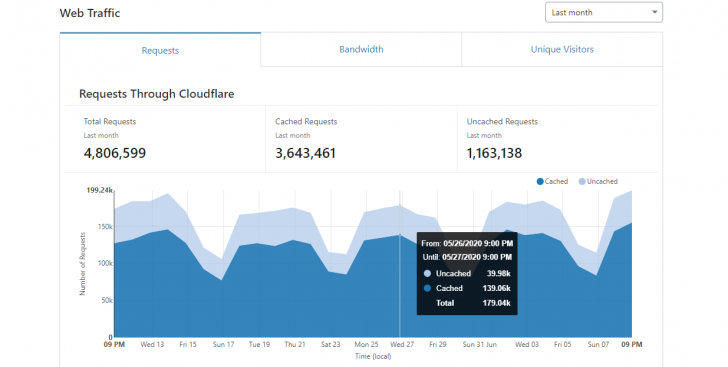
This service is more affordable than it appears, and in certain situations, you can even use it for free, such as with CloudFlare. Implementing CDN is beneficial for websites of any size.
To find out more, refer to the article on the benefits of using a CDN on your website.
Optimize images on the website
Images are one of the most significant factors in slowing down a website and can have negative effects on both the server and the user.
Large images with a high file size can exceed the storage capacity of a website server, potentially causing it to slow down or be suspended for breaching service regulations.
Heavy images can significantly impact the browsing experience for users, particularly those on slow connections who may struggle to load them, resulting in a negative user experience.
It is advised to edit all images before publishing them on your website or online store. There are various tools available, both free and paid, that can help optimize image file size by removing unnecessary pixels and employing other techniques. Content management systems like WordPress offer plugins, such as Smush, that can assist in optimizing image loading.

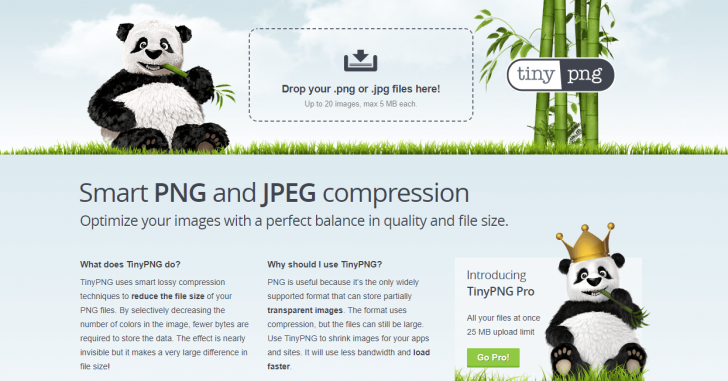
Visit the article “4 golden rules for optimizing images on your website” to discover more about this topic.
Ensure that SSL is configured correctly.
If you manage a website, you likely understand the significance of having an SSL certificate. This certificate ensures the security of data exchanged between your site and users through encryption, making it extremely difficult for hackers to access any intercepted information.
In order to maintain optimal hosting performance, it is crucial to have a valid SSL certificate in place. It is advisable to enable automatic renewal to avoid the risk of it expiring unexpectedly.
It’s important to not only have the certificate installed but also to guarantee that all traffic is encrypted through HTTPS and that no files are uploaded via HTTP. This kind of security lapse can not only jeopardize information but also deter potential customers as web browsers flag such incidents.
Check the website thoroughly to ensure that the lock icon is visible in the browser on every page. Alternatively, you can enter the site URLs into the Why No PadLock website for a security scan, which not only looks for insecure content but also verifies the SSL certificate.

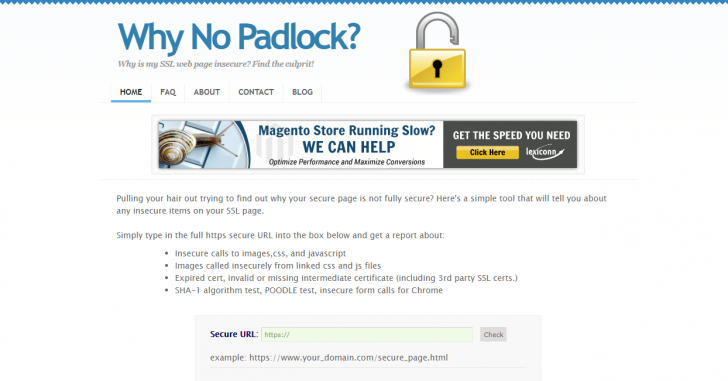
Visit the SSL certificate article to find out more about why your website requires it.
Establish a service for monitoring the website.
Implementing a website monitoring system is crucial for pinpointing issues promptly and taking action. It is beneficial to have a warning system in place to address unexpected problems while striving to maintain optimal performance.
Specialized services exist to monitor websites and servers on an ongoing basis.
A basic form of monitoring involves sending a data to a server and checking for a response. If no response is received, an alert is sent to the site administrator. Users can typically set the monitoring interval. More advanced systems can be implemented to monitor additional server features like CPU and memory usage, notifying the administrator of any issues. This system helps identify problems before a server crash occurs.
Services like PingDom and UptimeRobot provide remote monitoring in both free and paid versions, while more advanced systems like Zabbix can be installed on the hosting server to monitor its different aspects.

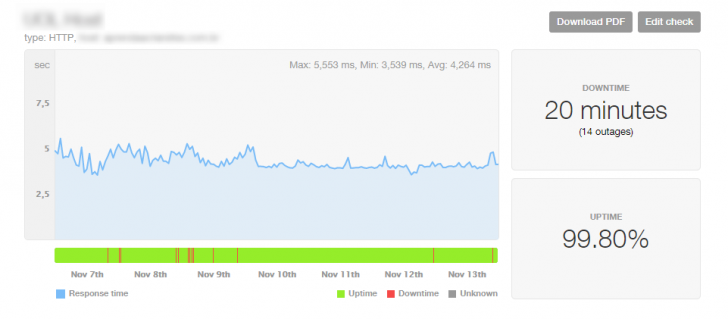
Monitoring your website is essential for those relying on its availability, making it a valuable asset in preventing or swiftly resolving unforeseen issues.
See the article on how to monitor hosting uptime to be alerted if your site goes down.
Upgrade if hosting optimization is insufficient.
The expansion of a website’s audience frequently necessitates increased focus on infrastructure, and if issues persist despite implementing suggested optimizations, an upgrade may be necessary.
Upgrade choices are varied and can cater to a wide range of requirements. Beyond basic shared hosting plans, which are the most affordable and restrictive in the market, there are several quality alternatives available in different categories.
A VPS is a virtual server that functions as a dedicated server in a shared setting, offering an appealing upgrade for users transitioning from shared plans. Our team has evaluated and compiled a list of the top VPS servers.
A dedicated server can be an excellent choice for more powerful websites and applications, providing clients with full access to server features. Check out a regularly updated list of top dedicated servers available on the market for more information.
Cloud hosting is essential for handling significant audience fluctuations as it allows for scaling infrastructure resources based on demand. This type of hosting is among the most intricate, necessitating a higher level of technical expertise.
Have a backup plan
No one is immune to unexpected events. In the realm of web hosting, the primary issues revolve around downtime and data loss, among other challenges. Therefore, having a backup plan is advisable to mitigate potential damages.
Having a backup of your site, containing source code, images, and the database, is crucial as part of a contingency plan. It is essential for data recovery or server migration, even though it does not prevent the site from going offline.
In severe situations where avoiding downtime is crucial, advanced solutions can be pursued. For instance, a high-traffic online store could utilize redundant servers and load balancers to distribute traffic. This approach typically requires a costly investment and the expertise of a dedicated team.
It is important to have an emergency plan in place for any situation that may arise, so you are ready to handle it if something goes awry.
In summary
Having a well-optimized hosting is crucial for any online business. It’s fascinating to observe how certain straightforward measures can enhance your website or online store to attract more visitors and perform well.
Some tools like website builders and pre-made online stores are exempt from the tips mentioned here because they are hosted platforms that do not require maintenance actions from the administrator and do not provide access to source code for self-optimization.
It is crucial to remember that these actions will benefit the overall health of your website. Implementing the procedures mentioned can help prolong your site’s presence on affordable hosting services.
Do you have any inquiries? Feel free to leave a comment and we can discuss further!
Publication date: 13/11/2017 (last modified on 31/05/2023)
